Name Bartolome Bermejo | ||
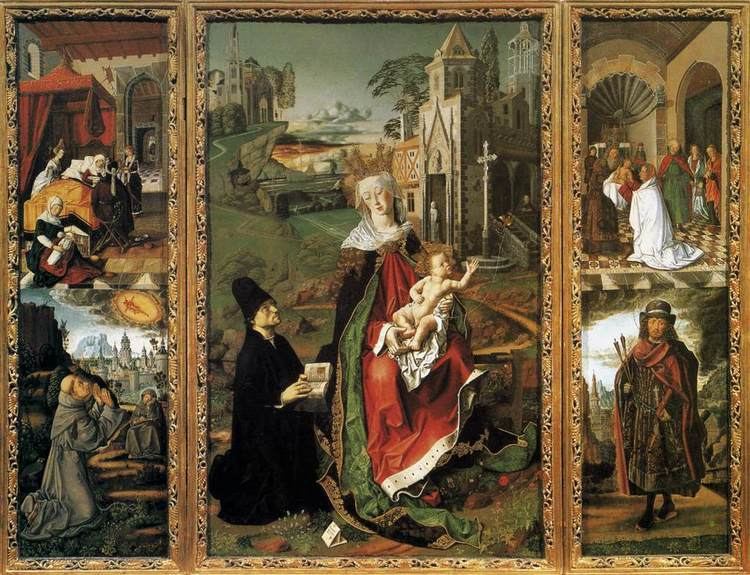 | ||
Exposición: Bartolomé Bermejo
Bartolomé Bermejo (c. 1440 – c.1501) was a Spanish painter who adopted Flemish painting techniques and conventions.
Contents
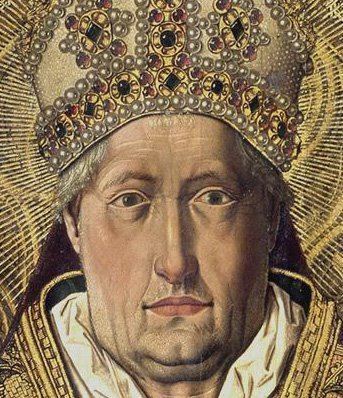
Biography
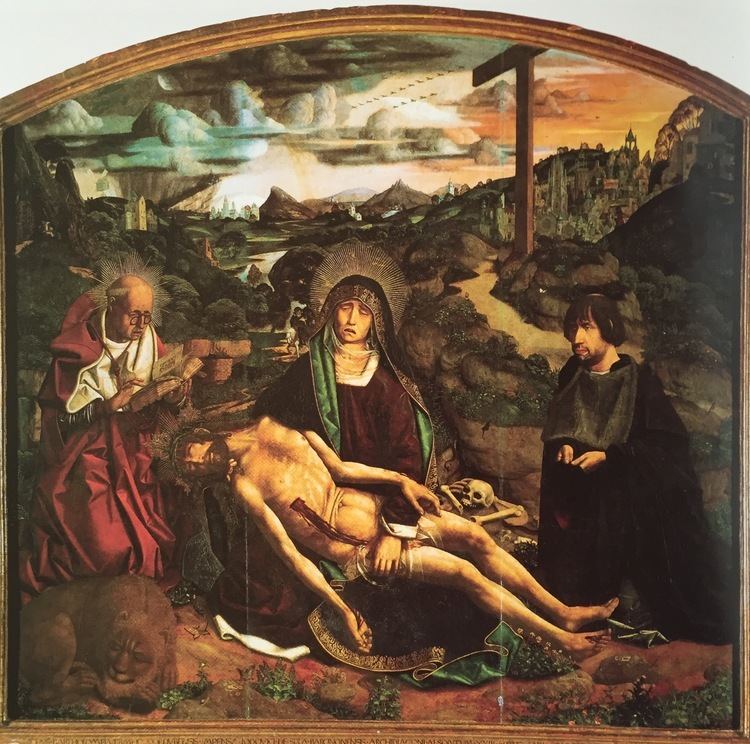
According to the inscription "OPUS.BARTOLOMEI.VERMEIO.CORDUBENSIS' on the frame of his most famous painting, Canon Lluís Desplà's Pietà, Bermejo, whose real name was Bartolomé de Cárdenas, was born in Córdoba. This theory has been recently cast into doubt, for there is no documentary or stylistic evidence of his presence there.
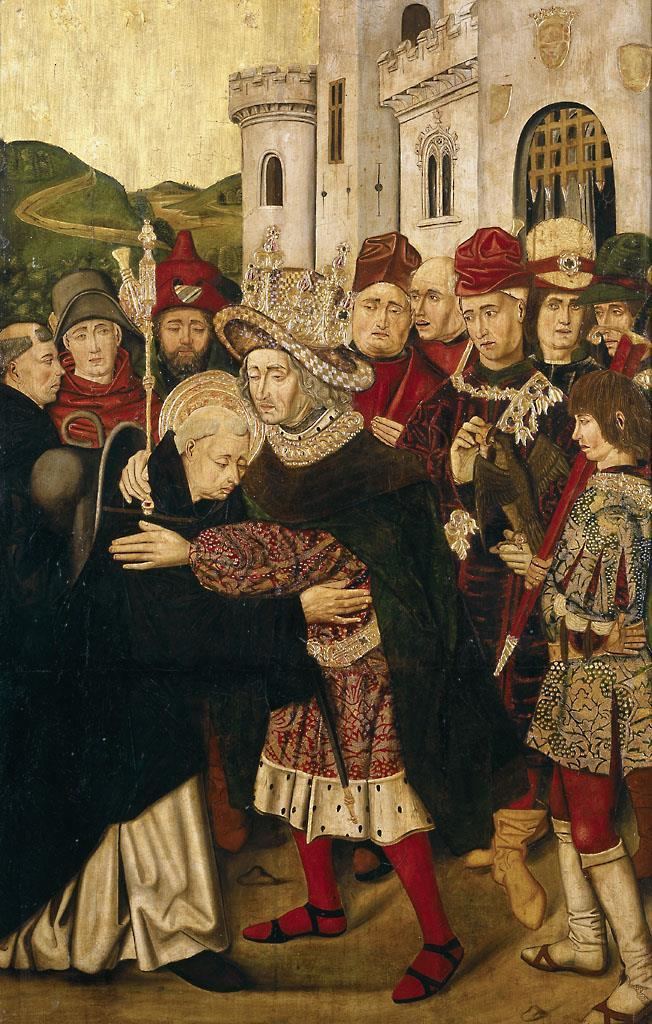
Documentation places his activity in four cities of the Crown of Aragon: Valencia (1468), Daroca (1474), Zaragoza (1477–84) and Barcelona (1486–1501).
Career
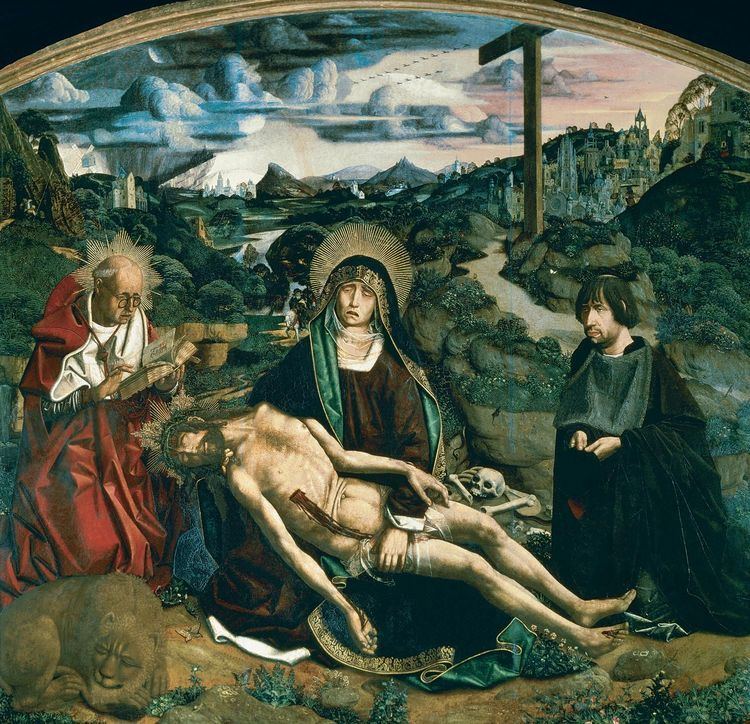
Although it is unclear where Bermejo received his training, his complete mastery of the oil glaze technique suggests direct contact with 15th century Flemish painting, which he was able to adapt perfectly to the demands of Spanish altarpieces of the period: large-scale retables with many panels. Though his documented career spans over thirty years, he was peripatetic: he never settled in one place for more than a decade. Also, in a period and place where painting was a business, and work was generally negotiated by contract, there is both direct and indirect evidence that he was professionally unreliable, though apparently his outstanding talent made patrons willing to take the risk. At least three major altarpieces that he undertook, the high altar retables of Santo Domingo de Silos in Daroca and Santa Anna in Barcelona, and the triptych of the Virgin of Montserrat in Valencia, were left incomplete for others to finish.
Valencia
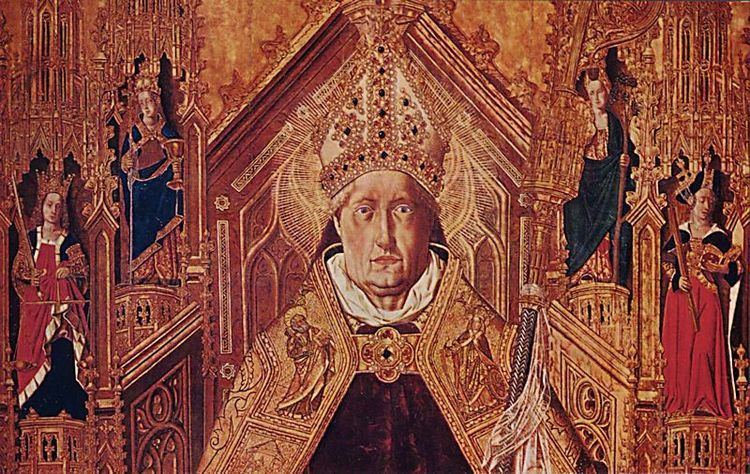
Bermejo’s professional career appears to have begun in Valencia in 1468, where he documented in a first payment for an altarpiece dedicated to Saint Michael for the Parish Church in Tous, near Valencia (the central panel of which is currently housed in the National Gallery, London).[1] The patron was a local nobleman, Antonio Juan, to whom Tous belonged. No documentation of other work from that period seems to have survived, but there is evidence that he returned there for a short time around 1485, when he painted the signed central panel of the Triptych of the Virgin of Montserrat, ordered by an Italian merchant who was living there, Francesco della Chiesa, for the Cathedral of Acqui Terme, his hometown. The wings were carried out by the Valencian painter Rodrigo de Osona, though there is some evidence that Bermejo was responsible for at least part of the underdrawing and some of the painting.
Aragon
By 1474, Bermejo had moved on to the Aragonese town of Daroca, where he signed a contract to paint the high altarpiece for the church of Santo Domingo de Silos. This contract is full of guarantees to keep Bermejo working on the altarpiece, including the threat of excommunication if he didn’t complete it, suggesting his reputation for unreliability.
Exactly how long Bermejo actually resided in Daroca is not clear; but he did complete at least one other altarpiece there, dedicated to Saint Engracia (now divided among various locations), and a Dead Christ in his Tomb for a local merchant, the Converso Juan de Loperuelo (Museu del Castell de Perelada). Though Bermejo was probably not a converso himself, he did marry one: the Daroca widow Gracia de Palaciano.
The doubts to his reliability proved true: by 1477, Bermejo had moved on to Zaragoza, having left only the central panel of the Santo Domingo de Silos altarpiece complete and being duly excommunicated. A Zaragoza painter, Martín Bernat, agreed to finish it, but a second contract, in 1477, was for a collaboration between the two painters. Analysis of the surviving panels of this altarpiece, now in the Prado, confirms this, as the other extant lateral narratives are in the coarser style associated with Bernat. ). Bermejo’s excommunication was revoked shortly after the signing of the second contract, and it was duly completed. He and Bernat continued to collaborate in Zaragoza, notably in the Altarpiece of the Virgin of the Snows for Juan Lobera for the latter's chapel in the church of El Pilar.(1479). In 1482-3, Bermejo was part of a team (which also included Bernat) that reapplied the polychromy on the alabaster High Altar Retable of Zaragoza Cathedral. For this work, it is known that he was paid more than any of the others, and also insisted on private working space for himself so that nobody, fellow painters or others, could observe him while he worked; another unusual demand at the time .
Barcelona
Whether or not he briefly returned to Valencia, Bermejo's later years were spent in Barcelona, where he first worked on the High Altar Retable for the convent church of Santa Anna (carpentry contract,1485) the surviving panels from this retable were destroyed in 1936, but old photographs suggest the intervention of a second, later hand, opening up the possibility that he did not finish this work either. Here, he completed his masterwork for Canon Lluís Desplà i Oms' private chapel, the Pietà in 1490, which contains the donor's portrait. Other documents in Barcelona concern designs for stained-glass windows. the Noli Me Tangere for the baptismal chapel of Barcelona Cathedral (1495) and two windows representing the virtues Faith and Hope for the Llotja of Barcelona in 1500 and 1501 (now destroyed). It is a testament to his skills and talent that though Barcelona was in a severe economic depression at this period, Bermejo continued to receive commissions from both its Cathedral Chapter and the municipal government.
Style
Beyond his skill in oil glaze painting, Bermejo's distinctive style can be seen in his physical types, a lively sense of drama in his narrative scenes, and above all in his attention to landscape, particularly in the extensive sunrise and sunset settings in the Triptych of the Virgin of Montserrat and the Pietà. Bermejo's distinctive style had a considerable influence, particularly in Aragon, where it was widely disseminated in the prolific studio of Martín Bernat. No one at this time, however, could duplicate his landscapes.
There are three surviving works that incorporate the artist's name within the compositions, still unusual in Spanish painting of this period: Saint Michael with Kneeling Donor, Antonio Juan; the Triptych of the Virgin of Montserrat with Donor, Francesco della Chiesa; and the Pietà with Canon Desplà. The first two bear the artist's name on simulated parchment, and the last is found in an inscription on the frame. Indirect evidence also speaks of royal patronage, for an Epiphany now in the Royal Chapel of Granada was part of the personal collection of Isabella I of Castile.
